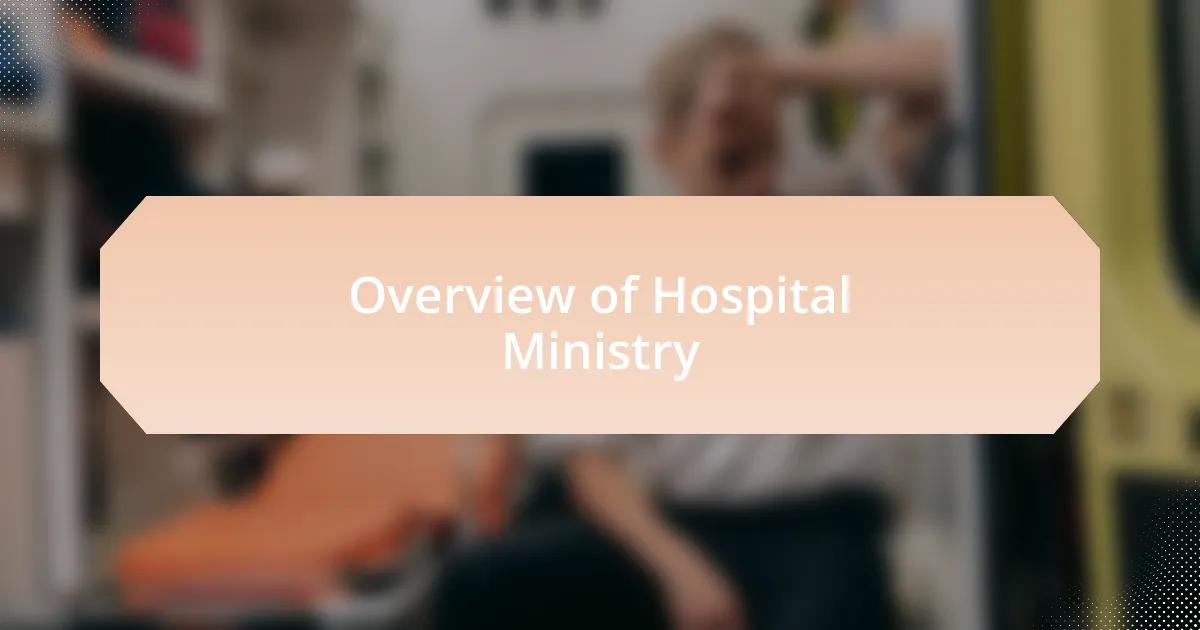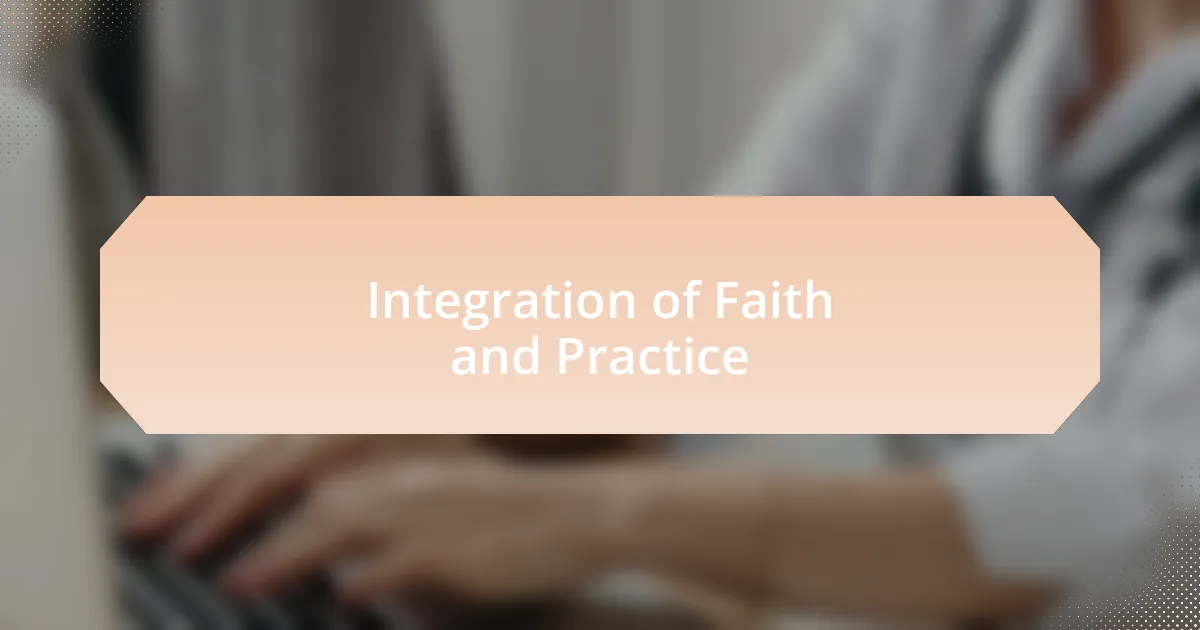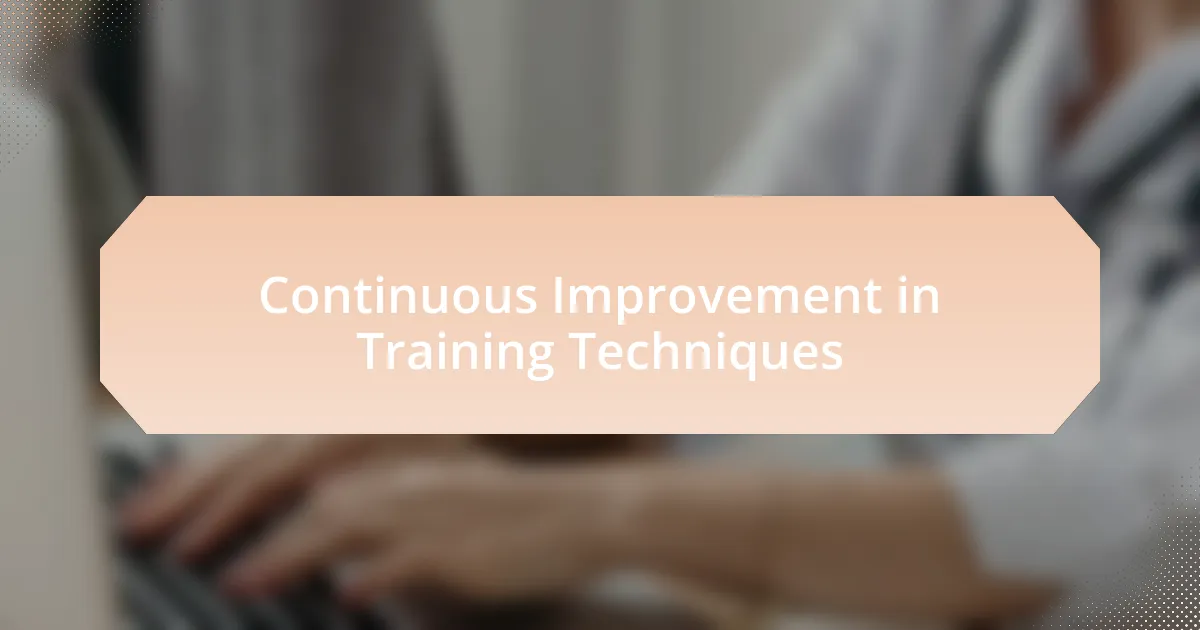Key takeaways:
- Hospital ministry bridges faith and healthcare, offering spiritual support to patients, families, and staff.
- Integrating prayer and personal faith stories into medical care can create profound connections and offer comfort in difficult situations.
- Continuous improvement in training techniques, such as incorporating feedback and hands-on experiences, enhances effectiveness in hospital ministry.
- Balancing personal faith with respect for diverse beliefs fosters inclusivity within healthcare environments.

Overview of Hospital Ministry
Hospital ministry serves as a vital link between faith and healthcare, providing spiritual support to patients, families, and staff in medical settings. I remember my first day in a hospital chapel; the quiet murmurs of prayer juxtaposed with the beeping of machines created a profound atmosphere. Have you ever noticed how a simple act of kindness can transform a moment in an overwhelmingly sterile environment?
Engaging with patients in their most vulnerable moments is both a gift and a responsibility. I often find that just listening can bring unexpected relief; once, a patient shared her fears, and by simply holding her hand and offering silent support, I witnessed a visible shift in her demeanor. Isn’t it fascinating how our presence can offer solace where words often fail?
Moreover, hospital ministry extends beyond individual interactions; it fosters a sense of community. Participating in group prayer sessions can create a bond between patients and caregivers, reminding everyone involved that they are not alone in their journey. Reflecting on these experiences, I often ask myself: how can we better nurture this community spirit within the walls of a hospital?

Integration of Faith and Practice
Integrating faith into practical care can illuminate the path for both patients and healthcare workers. I’ve found that when I blend prayer with the act of providing care, it cultivates a moment of grace. For instance, during a particularly challenging shift, I took a moment to pray quietly before entering a patient’s room. The palpable anxiety in that room transformed as I felt a renewed sense of purpose. Isn’t it remarkable how a few moments of reflection can reset our intentions in an environment where stress is often the norm?
There are times when sharing a scripture or a personal faith journey can create a deep connection. I once shared a verse about hope with a patient facing a daunting diagnosis. As I spoke, I could see his guarded expression soften; he later told me that hearing those words gave him a newfound strength. This interaction reinforced my belief that faith doesn’t just coexist with practice; it enriches it profoundly.
In my experience, the real challenge lies in being attentive to opportunities where faith can guide us in practice. It’s not always straightforward to know when to share insights or offer a listening ear. I often reflect: How can I ensure that my approach respects the diverse beliefs of those I encounter while still being faithful to my own? It’s a delicate balance, yet when achieved, it fosters an inclusive environment that celebrates the richness of different faith perspectives.

Continuous Improvement in Training Techniques
Continuous improvement in training techniques is crucial for fostering growth in hospital ministry. I recall a time when our team implemented feedback sessions after each training module. Initially, I was hesitant about whether they would be beneficial. However, I quickly realized that gathering insights from participants not only improved our training but also strengthened our sense of community. How often do we invite honest feedback, and how can we create a culture where it’s encouraged?
Additionally, experimenting with various training formats has been a revelation for me. For instance, I once introduced role-playing scenarios in our workshops, allowing participants to act out difficult conversations with patients. The energy in the room transformed; I noticed how lively interactions created a safe space for vulnerability and learning. Don’t you think that hands-on experiences can deepen understanding more than traditional lectures ever could?
Finally, I’ve found that revisiting our training content regularly helps keep our practices fresh and relevant. Just last month, I updated a workshop based on new research and personal experiences shared by colleagues. The enthusiasm that followed was contagious! How can we stay rooted in our vocation while adapting to new insights and challenges? It’s an ongoing journey, but recognizing the need for growth is what keeps our ministry vital and impactful.